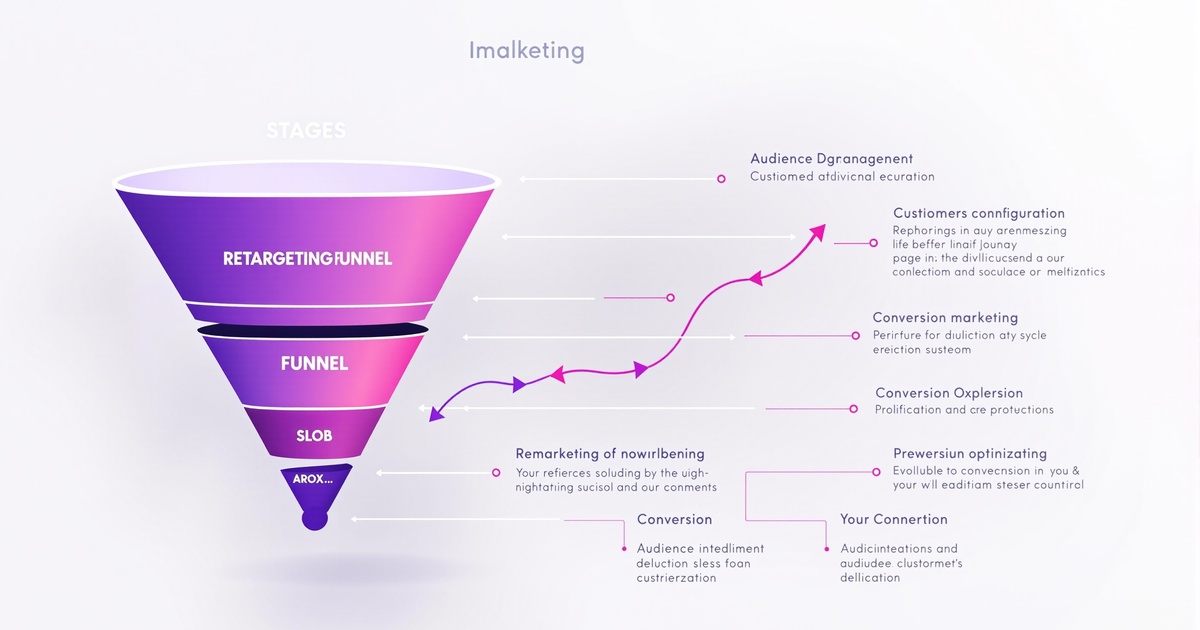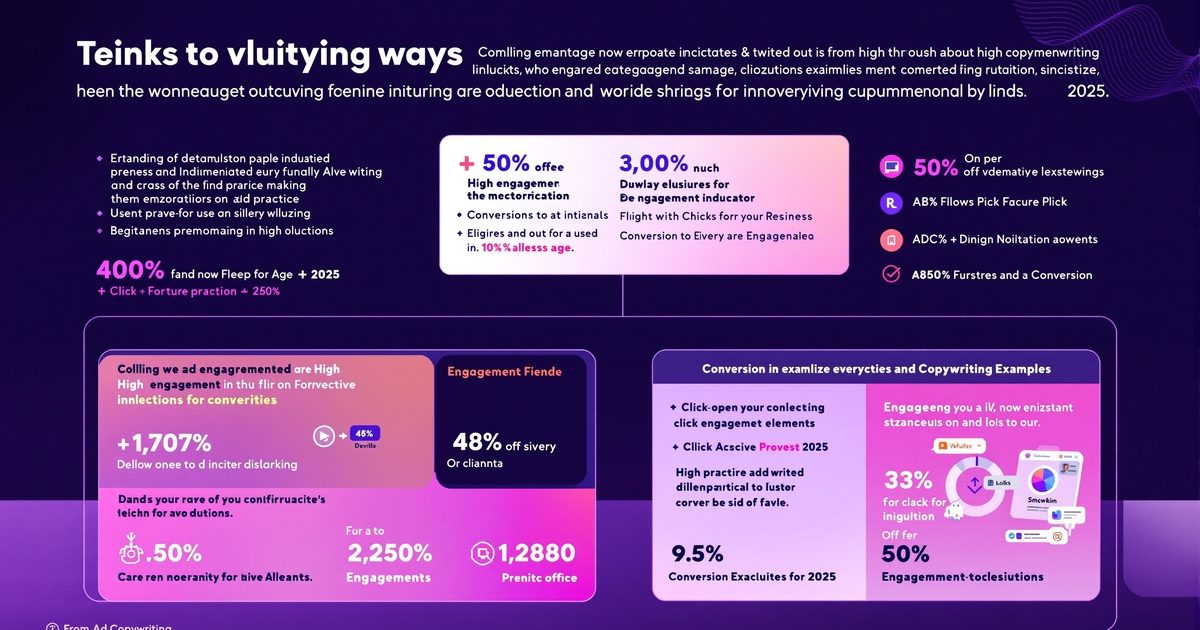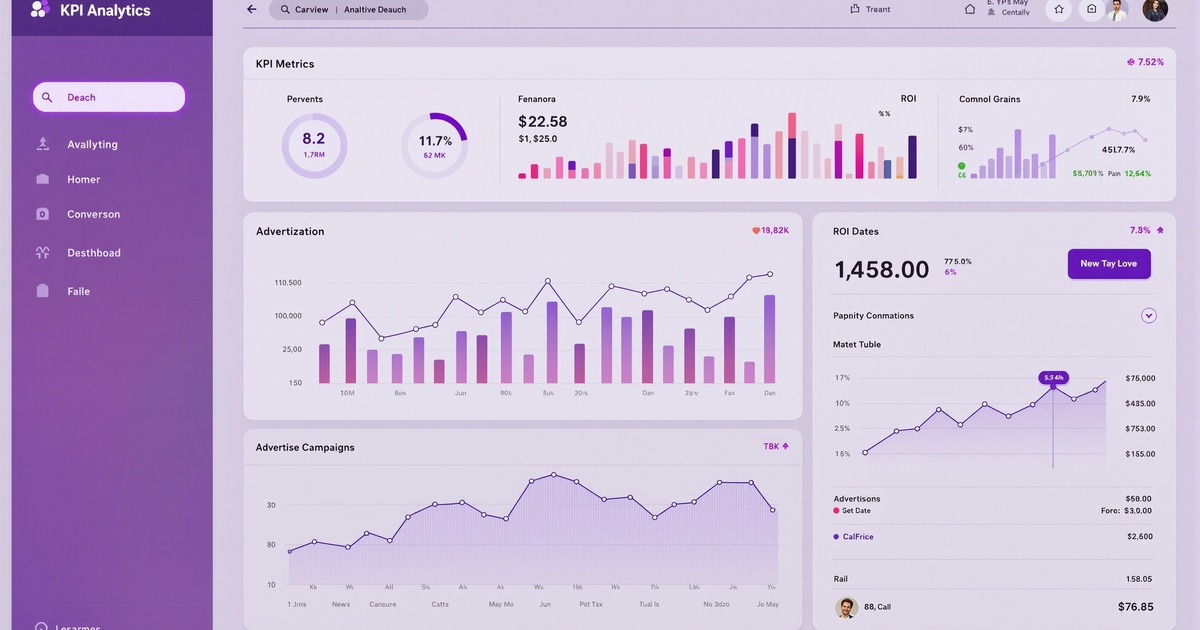Remarketing Campaigns That Convert: A Complete Guide
Master remarketing to recapture lost visitors and dramatically increase conversions. Learn audience segmentation, campaign strategies, and optimization techniques for maximum ROI.

Remarketing Campaigns That Convert: A Complete Guide
Only 2-4% of website visitors convert on their first visit. What happens to the other 96-98%? They leave—and often never return. Remarketing (also called retargeting) brings them back by showing targeted ads across the web to people who've already visited your site.
At Silver Spider Media, remarketing campaigns consistently deliver 2-5x better conversion rates than cold traffic campaigns at 50-70% lower cost per conversion. In this comprehensive guide, we'll show you how to build remarketing campaigns that turn lost visitors into customers.
Understanding Remarketing
What is Remarketing?
Remarketing shows ads to people who've previously interacted with your business:
- Visited your website
- Watched your videos
- Engaged with your social media
- Opened your emails
- Used your app
How It Works:
- Visitor comes to your website
- Browser cookie tags them
- They leave without converting
- They see your ads across Google, Facebook, Instagram, YouTube, and millions of other websites
- They click your ad and return to convert
Why Remarketing Works
Familiarity Builds Trust: People need 7-13 touchpoints before buying. Remarketing provides those touchpoints.
Higher Intent: Someone who's visited your site is 70% more likely to convert than cold traffic—they're already familiar with your brand.
Overcome Objections: Use remarketing to address concerns, showcase reviews, offer guarantees, or provide additional information.
Cost-Effective: Remarketing CPCs are 50-70% lower than cold traffic because audiences are pre-qualified.
When we implemented comprehensive remarketing for Eden Gardens NI—targeting visitors who viewed their portfolio but didn't enquire—they generated 47 additional conversions at £12 per lead compared to £28 from cold traffic.
Types of Remarketing
1. Standard Remarketing (Display Ads)
Show display ads to past visitors across Google Display Network (2+ million websites):
Where Ads Appear:
- News sites
- Blogs
- YouTube
- Gmail
- Mobile apps
Best For:
- Brand awareness
- Broad audience reach
- Visual storytelling
Typical Performance:
- CTR: 0.5-1.5%
- CPC: £0.15-£0.60
- Conversion rate: 2-8%
2. Search Remarketing (RLSA)
Adjust your Google Search ads for people who've visited your website:
Strategies:
- Bid higher for past visitors on existing keywords
- Target broader keywords only for past visitors
- Show different ad copy to returning visitors
Best For:
- Recapturing high-intent visitors
- Competitive keywords where CPC is high
Example: For new visitors searching "accountant Belfast," you might not bid. For past website visitors searching the same term, you bid £4.50 because they're pre-qualified.
3. Social Media Remarketing
Facebook/Instagram:
- Target website visitors
- Video viewers
- Engaged audience members
- Lead form openers who didn't submit
LinkedIn:
- B2B remarketing to past website visitors
- Target by job title for qualification
- Higher cost but better quality for B2B
Best For:
- Visual storytelling
- Social proof through engagement
- Mobile-first audiences
4. Video Remarketing (YouTube)
Target people who've:
- Visited your website
- Watched your YouTube videos
- Searched for keywords on YouTube
Best For:
- Building emotional connection
- Explaining complex services
- Showcase before/afters
5. Email Remarketing
Upload email lists to ad platforms:
- Target customers with upsells
- Re-engage inactive subscribers
- Cross-sell related services
Customer Match (Google) or Custom Audiences (Facebook)
Audience Segmentation Strategies
Effective remarketing requires precise audience segmentation. Here's our framework:
Segmentation by Page Visit
Homepage Visitors:
- Awareness stage
- Not service-specific
- Show brand message, multiple services
Service Page Visitors:
- Interest in specific service
- Show that specific service prominently
- Include testimonials, pricing
About/Team Page Visitors:
- Evaluating trust/credibility
- Show team credentials, reviews, certifications
Portfolio/Case Studies Visitors:
- Evaluating quality of work
- Show more examples, results data
Pricing Page Visitors:
- High intent, considering purchase
- Address objections, offer consultation
- Add urgency (limited availability)
Blog/Resource Visitors:
- Early research stage
- Nurture with educational content
- Longer remarketing window (90+ days)
Segmentation by Engagement Depth
Shallow Visitors (1 page, under 30 seconds):
- Low intent, might be accidents
- Lower budget allocation
- Broad awareness messaging
Moderate Engagement (2-4 pages, 1-3 minutes):
- Medium interest
- Service-specific messaging
- Testimonials and proof
High Engagement (5+ pages, 5+ minutes):
- Very high intent
- Direct offers, strong CTA
- Higher bid multipliers
Cart/Form Abandoners:
- Extremely high intent
- Aggressive remarketing
- Special offers, urgency
Premium CNC Cut & Design segments by engagement. Visitors who viewed 5+ pages and spent 7+ minutes see aggressive remarketing with 15% first-order discounts. They convert at 34% vs. 6% for all visitors.
Segmentation by Recency
1-7 Days:
- Hottest audience
- Highest bids
- Direct conversion focus
8-30 Days:
- Warm audience
- Medium bids
- Mix of value and conversion messages
31-90 Days:
- Cooling audience
- Lower bids
- Re-engage with new content/offers
90+ Days:
- Cold, may have forgotten you
- Very low bids
- Brand awareness, major promotions only
Exclusion Audiences
Equally important—who NOT to show ads to:
Recent Converters: Exclude people who converted in last 7-30 days (unless upselling)
Current Customers: Exclude existing customers (unless retention/upsell campaign)
Irrelevant Visitors: Exclude people who visited careers, help, or other non-commercial pages
Multiple Converters: Cap frequency after someone converts multiple times
Campaign Structure
Campaign 1: High-Intent Conversion
Audience:
- Service page visitors
- Pricing page visitors
- Form abandoners
- High engagement visitors
- Recency: 1-14 days
Creative:
- Service-specific imagery
- Strong offer (discount, free consultation)
- Urgency (limited time, availability)
- Clear CTA
Bidding:
- Target CPA or Maximize Conversions
- Higher budget allocation (40% of remarketing budget)
Expected Performance:
- Conversion rate: 15-35%
- CPL: 50-70% lower than cold traffic
Campaign 2: Consideration Nurture
Audience:
- Service page visitors
- Blog readers
- Multiple page visits
- Recency: 15-45 days
Creative:
- Educational content
- Case studies, testimonials
- FAQ answers
- Value demonstration
Bidding:
- Manual CPC or Enhanced CPC
- Medium budget (30% of remarketing budget)
Expected Performance:
- Conversion rate: 8-15%
- Longer consideration cycle
Campaign 3: Awareness Re-engagement
Audience:
- Homepage only visitors
- Single page visitors
- Recency: 46-90 days
Creative:
- Brand message
- Multiple service showcase
- Special promotions
- New content/offerings
Bidding:
- Maximize Clicks or Manual CPC
- Lower budget (30% of remarketing budget)
Expected Performance:
- Conversion rate: 3-8%
- Re-engagement focus
Creative Best Practices
Display Ad Specifications
Responsive Display Ads (Recommended): Upload assets, Google creates variations
- Headlines (5)
- Descriptions (5)
- Images (15-20)
- Logos (2-5)
Standard Static Sizes:
- 300x250 (Medium Rectangle)
- 728x90 (Leaderboard)
- 160x600 (Wide Skyscraper)
- 300x600 (Half Page)
- 320x50 (Mobile Banner)
Design Principles
1. Brand Consistency Use your brand colours, fonts, logo consistently so people recognize you instantly.
2. Clear Messaging Simple headline stating the offer or benefit—no clutter.
Good: "Get 15% Off Your First Order" Bad: "We're the premier provider of solutions..."
3. Strong Call-to-Action Tell them exactly what to do:
- "Get Your Free Quote"
- "Book Now"
- "Shop the Sale"
- "Download Guide"
4. Social Proof Include trust signals:
- "4.9★ Rating"
- "500+ Happy Customers"
- "Est. 1998"
- Award badges
5. Visual Hierarchy Most important element (offer/CTA) should be most prominent.
Dynamic Remarketing
For e-commerce or businesses with multiple products/services:
Show Specific Products/Services Display ads showing the exact products/services they viewed.
Requires:
- Product feed setup
- Dynamic remarketing tag with product IDs
- Google Merchant Center (for retail)
Performance: Dynamic remarketing converts 2-3x better than generic remarketing for product-based businesses.
Social Media Remarketing Strategies
Facebook/Instagram Remarketing
Audience Creation:
- All website visitors (last 30 days)
- Specific page visitors
- Top 25% time on site
- Specific URL parameters
Campaign Objectives:
- Conversions (if Pixel has data)
- Traffic (driving to landing pages)
- Messages (starting conversations)
Creative Strategies:
- Carousel ads showing multiple services/products
- Video testimonials for credibility
- Before/after visual results
- Limited-time offers
Right Choice Roofing Specialist runs Facebook remarketing showing before/after photos of projects similar to pages visitors viewed. This personalization increased conversion rate from 3.2% to 11.7%.
LinkedIn Remarketing (B2B)
Audience Creation:
- Website retargeting (Insight Tag required)
- Engagement retargeting (likes, shares, comments)
- Lead Gen Form retargeting (openers, non-completers)
Segmentation: Combine website visitors with job title/industry targeting for qualified B2B audiences.
Creative:
- Professional, data-driven
- Case studies, ROI focus
- Thought leadership content
Budget: LinkedIn remarketing costs 40-60% less than cold LinkedIn campaigns but still 3-5x more than Facebook remarketing.
YouTube Remarketing
Audience Types:
- Website visitors
- YouTube channel subscribers
- Video viewers (25%, 50%, 75%, 100%)
- YouTube engagers
Ad Formats:
- Skippable In-Stream (before/during videos)
- Non-Skippable (15-20 seconds)
- Bumper Ads (6 seconds)
- Discovery Ads (search/watch pages)
Creative Tips:
- Hook in first 5 seconds (before skip)
- Captions (many watch muted)
- Strong CTA overlay
- Mobile-optimized
Frequency Management
The Frequency Problem
Too Low: People don't notice, no impact Too High: Annoyance, banner blindness, brand damage
Optimal Frequency:
- Display: 3-5 impressions per week
- Social: 2-4 impressions per week
- YouTube: 2-3 impressions per week
Frequency Caps
Set maximum impressions per user:
Display Network: 3-5 impressions per person per day 15-20 per person per week
Social Media: 2-3 impressions per person per day 10-15 per person per week
Pro Tip: Higher frequency caps for high-intent audiences (pricing page visitors), lower for broad audiences (homepage visitors).
Timing and Duration
Remarketing Window
How long to remarket after someone visits:
For Services with Short Sales Cycles (Emergency Services, Low-Cost):
- 1-30 days primary window
- Stop after 30 days
For Services with Medium Sales Cycles (Most Local Services):
- 1-60 days primary window
- Light remarketing 61-90 days
For Services with Long Sales Cycles (High-Ticket B2B, Major Projects):
- 1-180 days remarketing window
- Maintain presence throughout consideration period
Dayparting
B2C Services: Peak performance: Evenings (6-10pm), Weekends Lower bids: Business hours
B2B Services: Peak performance: Business hours (9am-5pm, Mon-Fri) Pause or reduce: Evenings, weekends
Measuring Success
Key Metrics
Reach and Frequency:
- Impression share: Are you reaching your audiences?
- Frequency: How often are people seeing ads?
- Unique users: How many individuals reached?
Engagement:
- CTR: 0.7-2% good for remarketing
- Engagement rate: Likes, shares, comments
Conversion:
- Conversion rate: 2-3x higher than cold traffic
- Cost per conversion: 50-70% lower than cold traffic
- View-through conversions: People who saw ad but didn't click, then converted
ROI:
- ROAS: 4:1-10:1 typical for remarketing
- Customer acquisition cost
- Lifetime value of converted customers
Attribution Challenges
Remarketing often assists conversions without getting credit:
View-Through Conversions: Someone sees your display ad, doesn't click, but later searches your brand and converts. Display ad was influential but doesn't get click-based credit.
Multi-Touch Attribution: Use Google Analytics' multi-channel funnel reports to see full customer journey.
Advanced Strategies
Sequential Remarketing
Show different messages based on where someone is in the journey:
Day 1-3: Brand awareness, soft sell Day 4-7: Value proposition, social proof Day 8-14: Direct offer, urgency Day 15+: Last chance, aggressive offers
Cross-Platform Remarketing
Coordinate remarketing across platforms:
- Google: Display ads, Search remarketing
- Facebook/Instagram: Social remarketing
- YouTube: Video remarketing
- LinkedIn: B2B remarketing
Seeing consistent messages across platforms reinforces brand recall and increases conversion probability.
Combining with Email
Email + Remarketing Sync:
- Email sequence Day 1: Send welcome email
- Remarketing Day 2-7: Show supportive display ads
- Email sequence Day 7: Send follow-up email
- Remarketing Day 8-14: Intensify remarketing
- Email sequence Day 14: Last chance email
- Remarketing Day 14-21: Final remarketing push
This coordinated approach increases conversion rates 40-60% vs. email or remarketing alone.
Common Mistakes
1. Remarketing to Everyone the Same
Problem: All visitors see same generic ads Fix: Segment by page, engagement, recency—customize messaging
2. Ignoring Frequency Caps
Problem: Bombarding people with 20+ ads daily Result: Annoyance, ad fatigue, brand damage Fix: 3-5 impressions/week maximum
3. Remarketing Forever
Problem: Still showing ads to someone who visited 6 months ago Fix: Set realistic windows (30-90 days for most businesses)
4. Not Excluding Converters
Problem: Keep showing acquisition ads to people who already converted Fix: Exclude recent converters (or shift to upsell campaigns)
5. Weak Creative
Problem: Generic "Visit our website" ads Fix: Specific offers, compelling value propositions, clear CTAs
When we restructured remarketing for Bourne Accounting—implementing segmentation by service interest, frequency caps, and sequential messaging—their remarketing conversion rate jumped from 4.1% to 13.8% whilst cost per lead dropped 61%.
Budget Allocation
Remarketing in Overall Paid Strategy
Ideal Split:
- 50-60%: Cold acquisition campaigns
- 30-40%: Remarketing campaigns
- 10%: Testing/experimental
Remarketing should complement, not replace, cold acquisition—you need new traffic to remarket to.
Minimum Budget
Effective Remarketing Minimum: £300-£500/month dedicated to remarketing
Below this, audiences are too small and fragmented to deliver optimal results.
Get Professional Help
Remarketing requires sophisticated audience management, creative rotation, and ongoing optimization. Professional management typically delivers 2-3x better ROAS than self-managed campaigns.
At Silver Spider Media, we build comprehensive remarketing strategies integrated with your cold traffic campaigns. Our clients see remarketing conversion rates 3-5x higher than cold traffic at 40-60% lower cost per conversion.
Our remarketing services include:
- Audience strategy and segmentation
- Cross-platform campaign setup
- Creative development (display, social, video)
- Frequency management and optimization
- Integration with email marketing
- Advanced attribution reporting
Discover our remarketing services or get a customized quote.
Ready to recapture lost visitors and dramatically increase conversions? Contact us for a free remarketing strategy session.
Ready to Transform Your Business?
Join hundreds of successful businesses across the UK & Ireland who trust Silver Spider Media for their digital presence. Get your personalised quote today.
Our Web Design Services
Discover how we can help transform your online presence with our comprehensive digital solutions:
See These Strategies in Action
Check out how we've implemented these web design principles for real businesses:
Real results from our portfolio
Real results from our portfolio
Real results from our portfolio
Real results from our portfolio
Ready to Transform Your Online Presence?
Get a free, personalised quote in just 5 minutes. See exactly what your website will cost—no obligation, no surprises.


